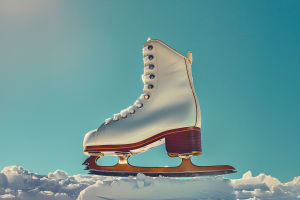Lykkers, get ready to roll! Inline skating is a fun, dynamic activity that combines movement, balance, and outdoor enjoyment. Perfect for people of all ages, it's not just a sport but also a relaxing way to spend time outdoors while staying active.
In this guide, you’ll find everything you need to know to start safely and confidently—from choosing the right equipment to basic techniques and helpful tips.
Why Choose Inline Skating?
It keeps your whole body active
Skating works various muscle groups, especially those in the legs, core, glutes, and back. It’s a great way to tone and strengthen without high-impact strain.
It boosts stamina and movement
Thanks to the continuous motion involved, skating helps improve heart health and endurance in a way that’s both fun and effective.
It improves coordination and balance
The need to stay steady on wheels naturally develops your balance and reaction time, useful skills in everyday life.
It’s easier on the joints
Unlike some high-impact sports, inline skating offers smoother motion that’s gentler on your knees and hips.
It helps ease tension
The fluid arm and leg movements involved promote better posture and help release stress stored in the upper body.
Getting the Right Gear
Choose skates that fit well
Good skates should hug the heel snugly and offer ankle support. The better the fit, the more control and comfort you’ll have.
Pick the right shell
Soft outer shells offer flexibility and breathability, while harder ones provide increased stability and responsiveness.
Consider the fastening system
Go with laces, buckles, or dial systems depending on your preference. Fastenings should be secure but easy to adjust.
Select suitable wheels
For beginners, medium-soft wheels (78–80 mm) offer better grip and help smooth out uneven surfaces, making skating easier and safer.
Ask for expert advice
Specialty shops can help match you with the best skates for your skill level and goals. A proper fit makes a big difference.
Protective Equipment Essentials
Wear a snug helmet
Choose one that fits securely and is made for skating or similar sports. It should sit level and protect the sides and back of your head.
Use knee and elbow pads
These help prevent bruises or scrapes and support joints during falls. Look for ones with soft padding and firm shells.
Protect your wrists
Wrist guards can prevent sprains or impact injuries. Opt for designs with adjustable straps and interior cushioning.
Be visible outdoors
If you skate near traffic or at dusk, wear light-reflective clothing to be seen by others.
Mastering the Basics
Practice falling safely
A controlled fall can reduce the risk of injury. Learn to land on your knees with your body upright and avoid reaching out with your hands.
Learn to stop
Use the heel brake on your skate by bending slightly and applying pressure while shifting weight onto the braking foot. Don’t grab onto objects—they may cause you to lose control.
Get moving
Start by bending your knees and keeping feet shoulder-width apart. Push gently off one foot while keeping the other steady for balance.
Turning techniques
Shift your weight to one side and let the skates follow the curve. Keep your eyes in the direction you want to go.
Don’t rush
Start slow. Once you feel steady and confident with the basics, you can gradually increase your speed.
Skating Spaces and Tips
Where to skate
Use sidewalks or dedicated paths whenever possible. When near others, slow down and give space.
Group classes and clubs
Joining a local group or class is a great way to improve. You’ll learn faster with guidance and enjoy the support of fellow skaters.
Exploring Inline Skating Styles
Fitness skating
Ideal for staying active and fit while enjoying the outdoors.
Inline hockey
A fast-paced group activity that builds teamwork and speed.
Cross skating
Similar to cross-country skiing, this is perfect for nature trails.
Speed skating
Focused on technique and pace, it’s suited for those who enjoy a good challenge.
Slalom skating
Involves weaving through cones and develops fine control.
Aggressive skating
Geared toward tricks and stunts using ramps or urban terrain.
Conclusion: Glide into a New Adventure
Inline skating offers a fantastic mix of fun, movement, and well-being. It’s easy to start, rewarding to learn, and suitable for nearly all ages. With the right gear, safety measures, and a bit of practice, Lykkers can enjoy this exciting outdoor activity at their own pace. Whether solo or with others, it’s a great way to enjoy the fresh air, move with freedom, and discover a whole new way to stay active.


